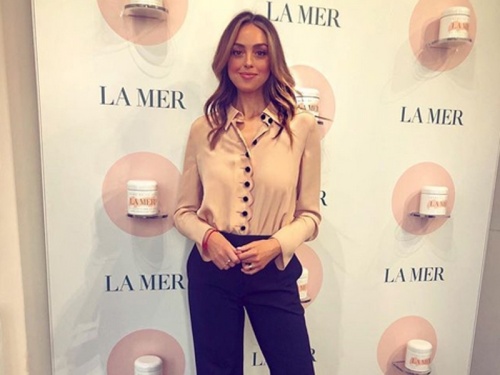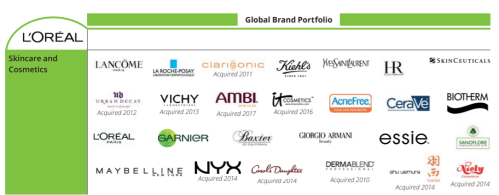Humans have become increasingly aware of the importance of taking care of their skin and hence have been and are using products in an attempt to enhance their appearance. Hence, the beauty and skin care industry is continually changing, evolving and diversifying.
It is undeniable that we are more concerned about our image than ever. The biggest reason for becoming so aware is due to the omnipresence of social media and the ‘selfie’ craze. In this new digital landscape, all the cosmetics brands today have realized that digital excellence is at the heart of change and a very important aspect in the prestige beauty market, especially in the skin care market. Although as of today, the contribution of pure online sales is relatively very small, it is yet to be known how much of this is due to the effect of online influence on social media. Even today, the majority of sales is still taking place in pharmacies, department stores, specialty stores but it cannot be denied that digital channels have become the primary arena for consumer decision making. Established and challenger brands alike are now primarily authenticated by online influencers. Devising an online strategy has become a must for all concerned brands because online presence and branding is the new age marketing.
Brand switching is increasingly on the rise as pure brand power is constantly challenged by online influencer power. As a result, online sales despite being relatively small is growing fast as it is boosted by the rise of ‘social commerce’.

Source: TouTube
The skin care market is a robust market that is compelled to evolve, adapt and diversify with the growing consumer demand which in turn is driving the innovation in the industry. Since skin care has the largest share of the beauty market currently, major scientific breakthroughs are also happening in order to address the consumers that call for more natural and effective ingredients. It is quite evident now that such demands and trends are all aiming at transparency i.e. consumers are looking for truth as they no longer believe in glossy, ‘larger than what is it’ type of ads and campaigns.
In order to stay relevant with the changing customer expectations, brands are moving away from their traditional strategies and switching to social media marketing which is responsible for attracting online traction and traffic. Typically, small and upcoming niche brands are adopting this way of marketing thereby benefitting largely and driving away the established brands out of dominance. So, what are they doing?
What lies at the center of the social media strategy? The answer is the influencers. Because they become examples for consumers to know how the products are working on real people. They post, reviews, tutorials, and experiences on social platforms along with their established credibility have garnered a larger audience and influences their decision making. They are key because they build personal touch and cultivate brand communities. Lets us look at few examples to understand the impact of social media influencing.
According to an L2 report shared by Mobile Marketer, Olay, the skincare brand owned by P&G spurred a 20% gain in consumer engagement from a social media campaign where they collaborated with influencers and asked them to document their experiences for a month while using the products and updating their followers along the way. This campaign was conducted in November 2017, where influencers offered free product samples and discount coupons with unique codes and mentioned links in their posts to encourage followers to participate in the challenge. This campaign resulted in a 22% increase in monthly google searches and boosted the online engagement which in turn led to online sales.

Source: Instagram: @alexsteinherr
According to a recent report by Traackr, the influencer relationship management platform, the luxury brand La Mer, owned by Estee Lauder, has wielded its status as a highly coveted brand in tandem with social media influencers in a manner earning the brand the most social media engagement in the first half of 2018. The brand could achieve this without sacrificing their authenticity or lowering the price tags. The brand became the most talked about skin care brand on social media thanks to the 12 million engagements on Facebook, Twitter, Instagram, and YouTube. The luxury skincare brand partnered with 1529 social media influencers which notably includes the likes of former beauty director of Glamour Alessandra Stenheirr, Heart FM radio DJ and presenter Lilah Parsons and make-up artist Patrick Ta. These engagements accounted for the mentions, engagements rates, potential reach, conversion rates, number of activated influencers and influence by channel.
The best part of social media influencer marketing is that the impact of the marketing campaigns is more of less measurable digitally. One more unconventional but notable example is that of a brand named ‘Swedish Skin’ that launched its products using social media only for 100% of its marketing. In one of his past interviews, the CEO, William Byrd went on to record by stating that the brand’s strategy involves “paying YouTube ‘skincare gurus’ to talk about my products” so that “their viewers see the products and visit the Swedish Skin website”. For such brands, the social media influencers lie at the heart of their marketing strategies.
There are several such examples that reinforce and prove the reach and conversions brands have achieved through social media influencer marketing. Consumers demand honestly and authenticity and tend to believe the influencers by expecting that the influencer content is genuine and realistic. Thus, influencers have a profound impact on consumers contemplating a purchase. Based on the company’s objectives the influencers can help in various ways like:
- Increasing brand awareness
- Driving traffic to distribution channels both online/offline
- Encourage product purchase through affiliation
- Promoting an event or product launches
- Boosting business volumes
- Building brand community
It is evident from this analysis that influences play a key role in the social media marketing strategies devised by the skin care brands in order to remain relevant and secure future growth. Do you agree?
Resources:
Nikola Kinski (June 23, 2017) “A perfect match: influencer marketing and the beauty industry”, Upfluence.com (online) retrieved from
https://upfluence.com/influencer-marketing/influencer-marketing-beauty-industry
October 1, 2018, “Luxury skin Care Brand earns most social engagement from top beauty influencers”, a new online report from Traackr (influencer relationship management platform) on the state of influence in skin care demonstrates the power of influencers in beauty marketing retrieved from
https://www.bizjournals.com/losangeles/prnewswire/press_releases/California/2018/10/01/UN23489
Emily Dobell (October 20, 2010), “Social media marketing allows for a new generation of sales strategy”, Cosmeticsdesign.com (online) retrieved from
Robert Williams (March 5, 2018), ” L2: Olay boosts engagement 20% with influencer skincare challenge”, Mobile Marketer (online) retrieved from



